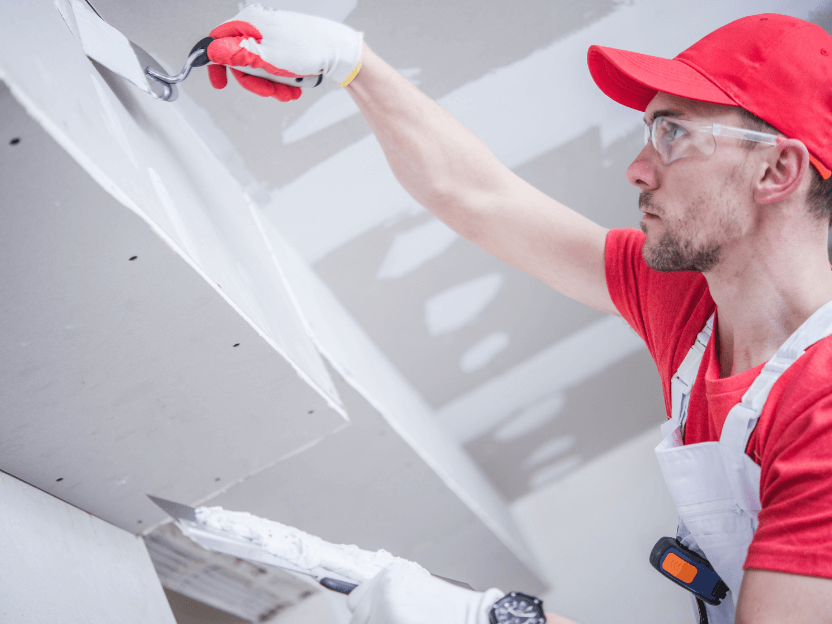
Many homes are under-insulated. High energy bills, air leakage, and severe discomfort in your home are all indicators. Is it possible to add insulation to your walls without remodeling your house?
South Central Services has insulated hundreds of new and existing homes around Greencastle, Pennsylvania. It is possible to install certain insulations in walls without removing drywall. However, wall insulation is not always the best choice for addressing poor insulation.
By the end of this article, you will know:
- Which insulations can be installed without removing drywall
- Which insulations cannot be installed without removing drywall
- Where to insulate in your home to improve energy costs and comfort
Don't have time to read right now? Check out everything you need to know at a glance.
Most Insulations Cannot Be Installed In Walls With Drywall Intact.
Most insulation products cannot be installed in wall cavities when drywall is intact. One of the most popular insulations is fiberglass batt. Many DIY homeowners opt for batt insulation in their walls, but they remove drywall to install it.
Another common insulation in our service area is blown-in insulation. Whether the product is cellulose or fiberglass, blown-in is only used in attic applications.
Our team at South Central Services primarily installs spray foam insulation. Like batt insulation, spray foam cannot be installed when drywall is intact. Spray foam is commonly used in wall cavities, but installers require a full range of motion to install it.
For most insulations, the entire wall cavity must be exposed before the insulation is installed.
Some Insulations Can Be Installed In Walls With Drywall Mostly Intact.
There are other insulations available besides batt, blown-in, and spray foam. Two of these products are dense pack insulation and injection foam.
Dense pack is a method of installing loose-fill or blown-in insulation. Rather than the loose-fill insulation being spread out on the attic floor, dense pack tightly condenses loose-fill into wall cavities.
Injection foam is commonly confused with spray foam. While both are technically plastic foam products, injection foam is made of different materials and functions differently. Unlike spray foam, which expands in place, injection foam does not expand.
Both of these insulations can be installed if holes are cut into the drywall. These insulations can also be installed with holes cut into the outer wall.
No insulation can be installed into a wall cavity without some damage to repair. However, dense pack and injection foam require the least disruption to your exterior walls.
We Don’t Recommend Insulating Your Walls This Way.
Starting a renovation may sound exhausting. Maybe you’ve lived through a renovation before and know firsthand how things can drag on unexpectedly. Or, you may not have the financial flexibility to undergo serious construction. In these situations, finding insulation that can slip into your exterior walls without much damage is quite appealing.
Even though dense pack and injection foam are used for this purpose, we do not recommend insulating your exterior walls in this way. As much of a headache as renovations can be, your drywall can be hiding a variety of problems that these insulations will not solve. We especially do not recommend insulating your exterior walls in this way when existing insulation is present.
We feel comfortable recommending injection foam or dense pack for exterior walls when there is no insulation in those cavities. The presence of any insulation in those walls will compromise the effectiveness of the new insulation.
In a best-case scenario, injection foam or dense pack will work around existing insulation, filling in any gaps or cracks. Perhaps the existing insulation will become a functional part of the new insulation.
In all likelihood, existing insulation may have mold or moisture. Even if the insulation is not harmful, its presence will inhibit the foam or dense pack from reaching all areas of the wall cavity.
Any time there is a gap in your insulation, both heat and air can freely pass through. Air leakage is undesirable but is often unavoidable when insulating your walls this way.
You Can Insulate Other Places In Your Home With Better Access.
At South Central Services, we prefer to insulate accessible areas of a home. Whether or not you’re mid-renovation, your attic, basement, and crawl space should be reasonably accessible.
Attics, basements, and crawl spaces are also part of a home’s thermal envelope. Effective insulation and air-sealing in these places can lower energy bills, reduce air leakage, and even improve air quality.

Unlike exterior walls, these areas are accessible without renovations. Batt, blown-in, or spray foam could be installed without demolition. Any existing insulation can easily be identified and removed.
The Bottom Line About New Wall Insulation In Existing Homes
You can insulate your exterior walls without removing any drywall. However, unless your walls have never had insulation in them before, wall insulation is not the wisest choice for energy efficiency. Instead, you can focus on accessible places in your home, such as your attic or crawl space.
If your exterior walls currently have no insulation, then your best insulation options are dense pack cellulose and injection foam. Both products can fill the wall cavities with minimal damages and repair costs.
Now that you understand when to insulate exterior walls and when to focus on more accessible areas of the home, your next step is to:
- Compare spray foam and injection foam in more detail
- Discover why air-sealing is important for a home
- Learn what you can expect from an insulation upgrade
Disclaimer: While we strive to publish information accurate to building science, local building codes and standards supersede our recommendations.
Kilian has co-owned and operated South Central Services for 8 years. He is passionate about community involvement. In his spare time, he enjoys being with his family, playing ice hockey, and going fishing with friends.
Topics:


